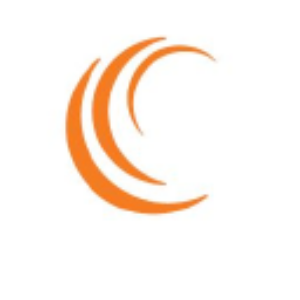HyBryte™ Expanded Treatment Results to be Presented at the European Organisation for Research and Treatment of Cancer Conference
Rhea-AI Summary
Soligenix (Nasdaq: SNGX) announced that two lead investigators will present findings from additional supportive trials of HyBryte™ (synthetic hypericin) for treating cutaneous T-cell lymphoma (CTCL) at the European Organisation for Research and Treatment of Cancer (EORTC) Cutaneous Lymphoma Tumour Group Annual Meeting in Lausanne, Switzerland on October 9-11, 2024.
Dr. Ellen Kim will present a poster with expanded preliminary results from an investigator-initiated study (RW-HPN-MF-01) at the University of Pennsylvania. Dr. Brian Poligone will give an oral presentation on results from two expanded treatment studies (HPN-CTCL-02 and HPN-CTCL-04) conducted at the Rochester Skin Lymphoma Medical Group.
These presentations will elaborate on findings demonstrating the utility of longer treatment times, the lack of significant systemic exposure to hypericin after topical application, and its relative efficacy and tolerability compared to Valchlor®.
Positive
- Presentation of expanded treatment results for HyBryte™ at a major cancer research conference
- Supportive trials demonstrate improved response rates with extended treatment and increased light doses
- Studies show utility of longer treatment times and lack of significant systemic exposure to hypericin
Negative
- None.
Insights
Soligenix's announcement of expanded treatment results for HyBryte™ represents positive clinical progress for their CTCL therapy. The presentations at the EORTC conference will showcase improved response rates with extended treatment and increased light doses - key efficacy metrics for this photodynamic therapy.
The supportive studies provide important validation across multiple parameters: longer treatment duration benefits (Penn study), minimal systemic absorption (safety advantage), and comparative performance against Valchlor® (competitive positioning). For CTCL patients, particularly those with early-stage mycosis fungoides, these findings suggest potential treatment advantages.
From a development perspective, these supportive studies complement Soligenix's previous Phase 3 FLASH trial, potentially strengthening their regulatory submission package. The involvement of prominent clinical investigators from Penn and Rochester Skin Lymphoma Medical Group adds credibility to these findings.
For a company with Soligenix's
Two Presentations Highlight HyBryte™ Therapy's Improved Response Rates with Extended Treatment and Increased Light Doses
Oral Presentation:
Session Title: ORAL PRESENTATIONS – CLINICAL STUDIES 1. The official conference program can be found here.
Oral Presentation Title: Phase 2a Study of Topical
Results and Review of the FLASH Study presented by Brian Poligone, MD, PhD, Director of the Rochester Skin Lymphoma Medical Group on October 9, 2024 at 5:54 pm.
Poster Presentation:
Topical hypericin ointment photodynamic therapy for early stage mycosis fungoides/CTCL – a Phase 2 real world investigator-initiated study presented on October 9th, 2024 by Ellen Kim, MD, Director, Penn Cutaneous Lymphoma Program, Vice Chair of Clinical Operations, Dermatology Department, and Professor of Dermatology at the Hospital of the University of
These presentations further elaborate on the Company's findings in these supportive studies which have demonstrated the utility of longer treatment times (Study RW-HPN-MF-01; investigator-initiated study), the lack of significant systemic exposure to hypericin after topical application (Study HPN-CTCL-02) and its relative efficacy and tolerability compared to Valchlor® (Study HPN-CTCL-04).
About the EORTC CLTG Meeting
An annual meeting of the cutaneous lymphoma tumour group (CLTG), a division of the European Organisation for Research and Treatment of Cancer (EORTC), focuses this year on facilitating the convergence of experts, delegates, and sponsors from
About HyBryte™
HyBryte™ (research name SGX301) is a novel, first-in-class, photodynamic therapy utilizing safe, visible light for activation. The active ingredient in HyBryte™ is synthetic hypericin, a potent photosensitizer that is topically applied to skin lesions that is taken up by the malignant T-cells, and then activated by safe, visible light approximately 24 hours later. The use of visible light in the red-yellow spectrum has the advantage of penetrating more deeply into the skin (much more so than ultraviolet light) and therefore potentially treating deeper skin disease and thicker plaques and lesions. This treatment approach avoids the risk of secondary malignancies (including melanoma) inherent with the frequently employed DNA-damaging drugs and other phototherapy that are dependent on ultraviolet exposure. Combined with photoactivation, hypericin has demonstrated significant anti-proliferative effects on activated normal human lymphoid cells and inhibited growth of malignant T-cells isolated from CTCL patients. In a published Phase 2 clinical study in CTCL, patients experienced a statistically significant (p=0.04) improvement with topical hypericin treatment whereas the placebo was ineffective. HyBryte™ has received orphan drug and fast track designations from the
The published Phase 3 FLASH trial enrolled a total of 169 patients (166 evaluable) with Stage IA, IB or IIA CTCL. The trial consisted of three treatment cycles. Treatments were administered twice weekly for the first 6 weeks and treatment response was determined at the end of the 8th week of each cycle. In the first double-blind treatment cycle (Cycle 1), 116 patients received HyBryte™ treatment (
In the second open-label treatment cycle (Cycle 2), all patients received HyBryte™ treatment of their index lesions. Evaluation of 155 patients in this cycle (110 receiving 12 weeks of HyBryte™ treatment and 45 receiving 6 weeks of placebo treatment followed by 6 weeks of HyBryte™ treatment), demonstrated that the response rate among the 12-week treatment group was
The third (optional) treatment cycle (Cycle 3) was focused on safety and all patients could elect to receive HyBryte™ treatment of all their lesions. Of note,
Overall safety of HyBryte™ is a critical attribute of this treatment and was monitored throughout the three treatment cycles (Cycles 1, 2 and 3) and the 6-month follow-up period. HyBryte's™ mechanism of action is not associated with DNA damage, making it a safer alternative than currently available therapies, all of which are associated with significant, and sometimes fatal, side effects. Predominantly these include the risk of melanoma and other malignancies, as well as the risk of significant skin damage and premature skin aging. Currently available treatments are only approved in the context of previous treatment failure with other modalities and there is no approved front-line therapy available. Within this landscape, treatment of CTCL is strongly motivated by the safety risk of each product. HyBryte™ potentially represents the safest available efficacious treatment for CTCL. With very limited systemic absorption, a compound that is not mutagenic and a light source that is not carcinogenic, there is no evidence to date of any potential safety issues.
Following the first Phase 3 study of HyBryte™ for the treatment of CTCL, the FDA and the EMA indicated that they would require a second successful Phase 3 trial to support marketing approval. With agreement from the EMA on the key design components, the second, confirmatory study, called FLASH2, is expected to be initiated before the end of 2024. This study is a randomized, double-blind, placebo-controlled, multicenter study that will enroll approximately 80 subjects with early-stage CTCL. The FLASH2 study replicates the double-blind, placebo-controlled design used in the first successful Phase 3 FLASH study that consisted of three 6-week treatment cycles (18 weeks total), with the primary efficacy assessment occurring at the end of the initial 6-week double-blind, placebo-controlled treatment cycle (Cycle 1). However, this second study extends the double-blind, placebo-controlled assessment to 18 weeks of continuous treatment (no "between-Cycle" treatment breaks) with the primary endpoint assessment occurring at the end of the 18-week timepoint. In the first Phase 3 study, a treatment response of
In addition, the FDA awarded an Orphan Products Development grant to support the evaluation of HyBryte™ for expanded treatment in patients with early-stage CTCL, including in the home use setting. The grant, totaling
About Cutaneous T-Cell Lymphoma (CTCL)
CTCL is a class of non-Hodgkin's lymphoma (NHL), a type of cancer of the white blood cells that are an integral part of the immune system. Unlike most NHLs which generally involve B-cell lymphocytes (involved in producing antibodies), CTCL is caused by an expansion of malignant T-cell lymphocytes (involved in cell-mediated immunity) normally programmed to migrate to the skin. These malignant cells migrate to the skin where they form various lesions, typically beginning as patches and may progress to raised plaques and tumors. Mortality is related to the stage of CTCL, with median survival generally ranging from about 12 years in the early stages to only 2.5 years when the disease has advanced. There is currently no cure for CTCL. Typically, CTCL lesions are treated and regress but usually return either in the same part of the body or in new areas.
CTCL constitutes a rare group of NHLs, occurring in about
About Soligenix
Soligenix is a late-stage biopharmaceutical company focused on developing and commercializing products to treat rare diseases where there is an unmet medical need. Our Specialized BioTherapeutics business segment is developing and moving toward potential commercialization of HyBryte™ (SGX301 or synthetic hypericin sodium) as a novel photodynamic therapy utilizing safe visible light for the treatment of cutaneous T-cell lymphoma (CTCL). With successful completion of the second Phase 3 study, regulatory approvals will be sought to support potential commercialization worldwide. Development programs in this business segment also include expansion of synthetic hypericin (SGX302) into psoriasis, our first-in-class innate defense regulator (IDR) technology, dusquetide (SGX942) for the treatment of inflammatory diseases, including oral mucositis in head and neck cancer, and (SGX945) in Behçet's Disease.
Our Public Health Solutions business segment includes development programs for RiVax®, our ricin toxin vaccine candidate, as well as our vaccine programs targeting filoviruses (such as Marburg and Ebola) and CiVax™, our vaccine candidate for the prevention of COVID-19 (caused by SARS-CoV-2). The development of our vaccine programs incorporates the use of our proprietary heat stabilization platform technology, known as ThermoVax®. To date, this business segment has been supported with government grant and contract funding from the National Institute of Allergy and Infectious Diseases (NIAID), the Defense Threat Reduction Agency (DTRA) and the Biomedical Advanced Research and Development Authority (BARDA).
For further information regarding Soligenix, Inc., please visit the Company's website at https://www.soligenix.com and follow us on LinkedIn and Twitter at @Soligenix_Inc.
This press release may contain forward-looking statements that reflect Soligenix's current expectations about its future results, performance, prospects and opportunities, including but not limited to, potential market sizes, patient populations, clinical trial enrollment, the expected timing for closing the offering described herein and the intended use of proceeds therefrom. Statements that are not historical facts, such as "anticipates," "estimates," "believes," "hopes," "intends," "plans," "expects," "goal," "may," "suggest," "will," "potential," or similar expressions, are forward-looking statements. These statements are subject to a number of risks, uncertainties and other factors that could cause actual events or results in future periods to differ materially from what is expressed in, or implied by, these statements, and include the expected amount and use of proceeds from the offering and the expected closing date of the offering. Soligenix cannot assure you that it will be able to successfully develop, achieve regulatory approval for or commercialize products based on its technologies, particularly in light of the significant uncertainty inherent in developing therapeutics and vaccines against bioterror threats, conducting preclinical and clinical trials of therapeutics and vaccines, obtaining regulatory approvals and manufacturing therapeutics and vaccines, that product development and commercialization efforts will not be reduced or discontinued due to difficulties or delays in clinical trials or due to lack of progress or positive results from research and development efforts, that it will be able to successfully obtain any further funding to support product development and commercialization efforts, including grants and awards, maintain its existing grants which are subject to performance requirements, enter into any biodefense procurement contracts with the
![]() View original content to download multimedia:https://www.prnewswire.com/news-releases/hybryte-expanded-treatment-results-to-be-presented-at-the-european-organisation-for-research-and-treatment-of-cancer-conference-302267535.html
View original content to download multimedia:https://www.prnewswire.com/news-releases/hybryte-expanded-treatment-results-to-be-presented-at-the-european-organisation-for-research-and-treatment-of-cancer-conference-302267535.html
SOURCE SOLIGENIX, INC.









